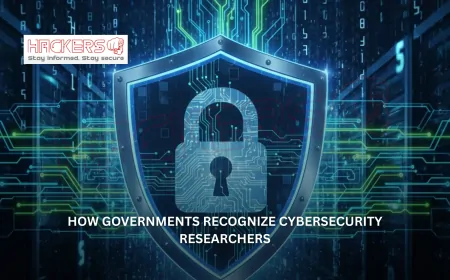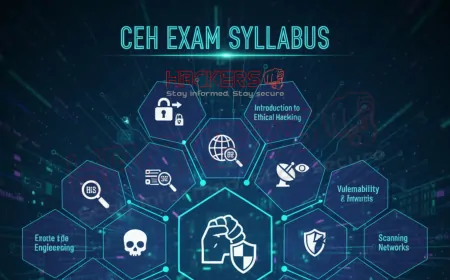Why Should Healthcare Focus More on IoT Security?
A patient’s heart monitor beeps steadily. A nurse checks insulin levels from her tablet. An MRI machine sends scans to the cloud in seconds. This is modern healthcare, powered by Iot, or the Internet of Things. These connected devices save lives, cut costs, and improve care. But here’s the problem: they are also hackable. A hacked pacemaker can stop a heart. A stolen patient record can ruin a life. In 2024, healthcare faced over 1,400 cyberattacks per week. Many started with an unsecured IoT device. This blog explains, in plain language, why hospitals, clinics, and health tech companies must prioritize IoT security. It’s not just about data. It’s about human lives. Let’s explore why, how, and what you can do.

Table of Contents
- How IoT Is Transforming Healthcare
- Real Risks: Patient Safety at Stake
- Protecting Sensitive Patient Data
- The High Cost of Healthcare Breaches
- Meeting HIPAA, GDPR, and Other Laws
- IoT Supply Chain Vulnerabilities
- Legacy Medical Devices Can’t Be Patched
- Ransomware Loves Healthcare IoT
- Staff Training: The Human Factor
- Network Segmentation Saves Lives
- Using AI to Detect IoT Threats
- Future-Proofing Healthcare IoT
- IoT Security Priorities in Healthcare Table
- Conclusion
How IoT Is Transforming Healthcare
IoT devices are everywhere in medicine. Smart infusion pumps deliver exact drug doses. Wearables track heart rate and sleep. Telemedicine connects rural patients to specialists. Connected beds alert staff if a patient falls. These tools improve outcomes and save billions in costs.
- Remote monitoring reduces hospital stays
- Real-time data helps doctors act fast
- Automated systems free nurses for care
But every device is a potential entry point for hackers.
Real Risks: Patient Safety at Stake
A hacker changes an insulin pump dose. A ventilator shuts down mid-surgery. A defibrillator fails during a heart attack. These are not hypotheticals. Researchers have shown they’re possible. In 2017, the FDA recalled 465,000 pacemakers due to hackable firmware. Patient lives depend on secure IoT.
- Altered drug delivery can kill
- Disabled devices delay treatment
- False readings mislead doctors
Protecting Sensitive Patient Data
IoT collects health records, DNA, location, and habits. This data is gold to cybercriminals. A breach leaks HIV status, mental health history, or fertility treatments. Patients lose trust. Hospitals face lawsuits. HIPAA requires protection, but many IoT devices don’t encrypt data by default.
- Health data sells for 10x more than credit cards
- Once leaked, it can’t be changed like a password
- Blackmail and identity theft follow
The High Cost of Healthcare Breaches
One breach costs $10.1 million on average, per IBM. That’s the highest of any industry. Add downtime: surgeries canceled, ambulances diverted, records locked. In 2021, a Florida hospital paid $5.5 million after a ransomware attack hit IoT systems. Security saves money long-term.
- Fines from regulators
- Legal fees and settlements
- Lost revenue during outages
Meeting HIPAA, GDPR, and Other Laws
HIPAA demands risk assessments and encryption. GDPR applies to EU patients. FDA guides medical device security. Non-compliance means massive fines: up to $50,000 per violation. IoT security isn’t optional. It’s the law.
- Document every device and control
- Conduct annual risk audits
- Report breaches within 60 days
IoT Supply Chain Vulnerabilities
Devices come from global vendors. A flaw in one chip affects thousands of hospitals. In 2020, a solar panel IoT chip had a backdoor. Imagine that in an MRI. Vet suppliers. Demand security certifications like ISO 27001 or ioXt.
- Third-party code in firmware
- Fake or cloned devices
- End-of-life support gaps
Legacy Medical Devices Can’t Be Patched
Many devices run Windows XP or old Linux. No updates. No antivirus. They’re approved by FDA and can’t be altered. Hospitals keep them for 10 to 15 years. Isolate them on separate networks. Monitor traffic. Plan phased replacement.
- Costly to replace overnight
- Regulatory approval slows upgrades
- Virtual patching via firewalls
Ransomware Loves Healthcare IoT
Attackers know hospitals pay fast to save lives. In 2023, 75 percent of healthcare ransomware started via IoT. A smart fridge or printer becomes the door. Once inside, data is encrypted. Operations stop. Pay or lose access.
- Backup critical systems offline
- Segment IoT from patient records
- Train staff to spot phishing
Staff Training: The Human Factor
Nurses plug in personal phones. Doctors click fake update links. 88 percent of breaches involve human error. Train everyone: from janitors to surgeons. Run phishing drills. Teach password hygiene. Make security part of onboarding.
- Monthly 10-minute sessions
- Real-life breach stories
- Reward secure behavior
Network Segmentation Saves Lives
Don’t let a hacked thermometer reach the EHR system. Use VLANs or micro-segmentation. Group devices: patient monitors, staff Wi-Fi, guest access, IoT. Allow only needed communication. A breach stays contained.
- IoT on its own subnet
- Firewall rules between zones
- Zero-trust: verify every connection
Using AI to Detect IoT Threats
AI watches device behavior. A pump sending 10x normal data? Alert. A camera accessing files at midnight? Block. Tools like Microsoft Defender for IoT or Asimily use AI to spot anomalies humans miss.
- Reduces false alarms
- Scales to thousands of devices
- Predicts attacks before damage
Future-Proofing Healthcare IoT
5G, AI, and wearables are coming. Security must be built in from day one. Choose devices with: - Regular updates - Strong encryption - Remote disable options Plan for 10-year lifecycles. Budget for security, not just features.
- Secure by design standards
- Interoperability with security tools
- Scalable monitoring platforms
IoT Security Priorities in Healthcare Table
| Priority | Why It Matters | Action Steps | Impact Level |
|---|---|---|---|
| Patient Safety | Hacked devices can harm or kill | Patch, isolate, monitor | Critical |
| Data Privacy | Leaks destroy trust and lives | Encrypt, access control | High |
| Regulatory Compliance | Avoid fines and shutdowns | Audit, document, train | High |
| Network Segmentation | Contains breaches | VLANs, firewalls | High |
| Staff Training | Humans are the weakest link | Drills, policy | Medium |
| Vendor Management | Weak supply chain = weak hospital | Vet, contract clauses | Medium |
| AI Monitoring | Scales to thousands of devices | Deploy tools | Medium |
| Legacy Device Plan | Old tech can’t be secured | Isolate, replace | High |
Conclusion
Healthcare runs on IoT. From pacemakers to patient portals, connected devices are here to stay. But with great power comes great risk. A single unsecured device can endanger lives, leak secrets, and bankrupt a hospital. Security isn’t a luxury. It’s a life-saving necessity. Start with segmentation, training, and smart tools. Demand secure devices from vendors. Comply with laws. Use AI to watch the network. The future of medicine is digital. Make sure it’s also safe. Protect your patients. Protect your mission. Secure your IoT today.
Why is IoT security critical in healthcare?
It protects patient lives and private health data from cyberattacks.
Can a hacked IoT device kill someone?
Yes. Altered pacemakers or insulin pumps can be fatal.
Is HIPAA enough to secure IoT?
No. It sets rules, but you must enforce them with tools and training.
Should hospitals ban personal IoT devices?
Yes. No smartwatches or phones on clinical networks.
Can legacy devices ever be secure?
Not fully. Isolate them and plan replacement.
Does encryption slow down medical devices?
Modern devices handle it fine. Security beats speed in emergencies.
Who pays for IoT security in hospitals?
IT budget, grants, or device vendors. It’s cheaper than a breach.
Can AI replace human security staff?
No. AI assists. Humans make final calls.
Should patients worry about wearable security?
Yes. Change defaults, update apps, and check privacy settings.
Is ransomware still a top threat?
Yes. Healthcare is #1 target due to urgency and data value.
Can network segmentation stop all attacks?
No, but it limits damage and buys response time.
Do medical device makers care about security?
More now. FDA and EU laws force it. Still vet carefully.
Should small clinics worry about IoT?
Yes. One device can lead to fines or patient harm.
Can insurance cover IoT breach costs?
Some policies do. Check for cyber and IoT clauses.
Is 5G a security risk for healthcare IoT?
It increases speed and devices. Secure it with encryption and access control.
Should staff get security training?
Yes. Monthly, short, and practical. Include phishing tests.
Can patients check if their data is secure?
Ask providers about encryption, updates, and breach history.
Is cloud safer than on-premise IoT?
Can be, if the provider follows HIPAA and uses strong security.
Should hospitals have a CISO?
Yes. A Chief Information Security Officer focused on IoT and data.
Will IoT security get better?
Yes. Laws, AI, and awareness are driving change. But action is needed now.
What's Your Reaction?






























































